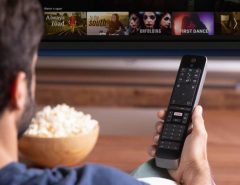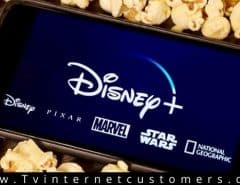Hooking up a smart TV for the first time is confusing. If you just take a look around, at the back of the TV, you are likely to find so many ports. Some of them might be on the sides and the top too.
What are they for and what do they have to do with setting up the TV? This TV port guide reveals it all.
Table of Contents
Types of Ports on Your Smart TV
This table lists down all ports found on smart TVs along with their purpose:
| Ports | Purpose | Picture Quality |
|---|---|---|
| HDMI | Video/audio/computer | Best |
| Component | Video | Better |
| S-Video | Video | Good |
| Composite | Video | Good |
| Optical Digital | Audio | Better |
| Coaxial Digital | Audio | Better |
| RCA Stereo | Audio | Good |
| DVI | Computer | Better |
| VGA | Computer | Good |
| USB | Incidental | N/A |
| Ethernet | Internet | N/A |
| Antenna In | OTA TV | Better |
HDMI Port
HDMI is one of the most common ports on any TV. It can help you turn a regular TV into a smart TV as well. It is the most functional option as well because it can be used for audio, video and hooking up PCs.
All modern devices such as media players, sound systems, game consoles, DVRs, computers, etc. have this port on them. Even streaming devices like Roku, Amazon Fire TV stick have HDMI ports. Cox TV equipment has an HDMI port as well that lets you connect the cable box to your TV and you can start watching your favorite shows right away.
HDMI transfers digital data without compressing the information. Hence, it delivers the highest sound and picture quality up to 4K Ultra HD resolution. All leading cable service providers who offer digital cable boxes with no hidden cost support HDMI ports.
How to Hook Your TV?
To hook up your TV, you will need a connected device first. It could be a game console, media player or a cable box. No matter what the device, the basics are pretty much the same.
If you are a Cox cable TV customer and you would like to connect your cable box to your TV via HDMI cable. Follow these steps to get started:
#1: Stay Organized
Before starting, it’s recommended to keep a notebook with you and use colored sticky notes for labeling and identifying the devices and cable. There must be some room in front of the TV. Remove all clutter from the floor.
Place each device with its cable and color code it. Write down the color of the respective device in your notebook. For example, choose red for cable TV box and its cable.
#2: Connect to the TV
Find the input and output ports. They are mostly located at the back of the TV or its sides.
Then locate the HDMI ports. They will also be there at the back of the TV or where the rest of the ports are. One of the HDMI ports might be labeled HDMI ARC. You must avoid it.
Choose the input ports and connect the HDMI cable. There will be multiple HDMI ports so write down the port number next to each device in the notebook.
#3: Connect the Cable to the Devices
At this point, all cables must be plugged into the TV and the devices must lay on the floor. Using your notebook as a reference, connect the other end of each cable to its respective device (in your case, the cable box).
Connect the power adapter of your cable to the power outlet and make sure it’s on.
Read Suggestion:What is A WiFi Mesh System?
#4: Configure the Settings
Turn on your TV to see if the cable box has connected successfully. Use the remote to go to the input menu and choose the device you want to configure from the list. Then switch to the correct input on your TV.
The procedure in this step might differ from the TV model and cable service provider. If you have Contour TV by Cox, the process would vary slightly.
#5: Congratulations
You are done setting up your TV to the cable box using an HDMI cable.
Read Suggestion: Signage Design for Realtors – What Points to Consider?
How to Determine the Correct Input Port?
The input port on the TV is where you insert the video cable. These tips will help you locate the right one:
- Check the label to see what type of connection it is.
- Connect the cable to the port.
- This should power on the cable box.
- Press the input button on your TV by using the remote.
- You will see the label for the input on the screen.
Usually, HDMI 1 and HDMI 2 are the input ports on the TV.
As mentioned earlier, the steps will slightly vary if you would like to hook up another device with your TV. If you face any trouble or need assistance in finding the input/output port, check the manual of your device or call the respective business customer service.




